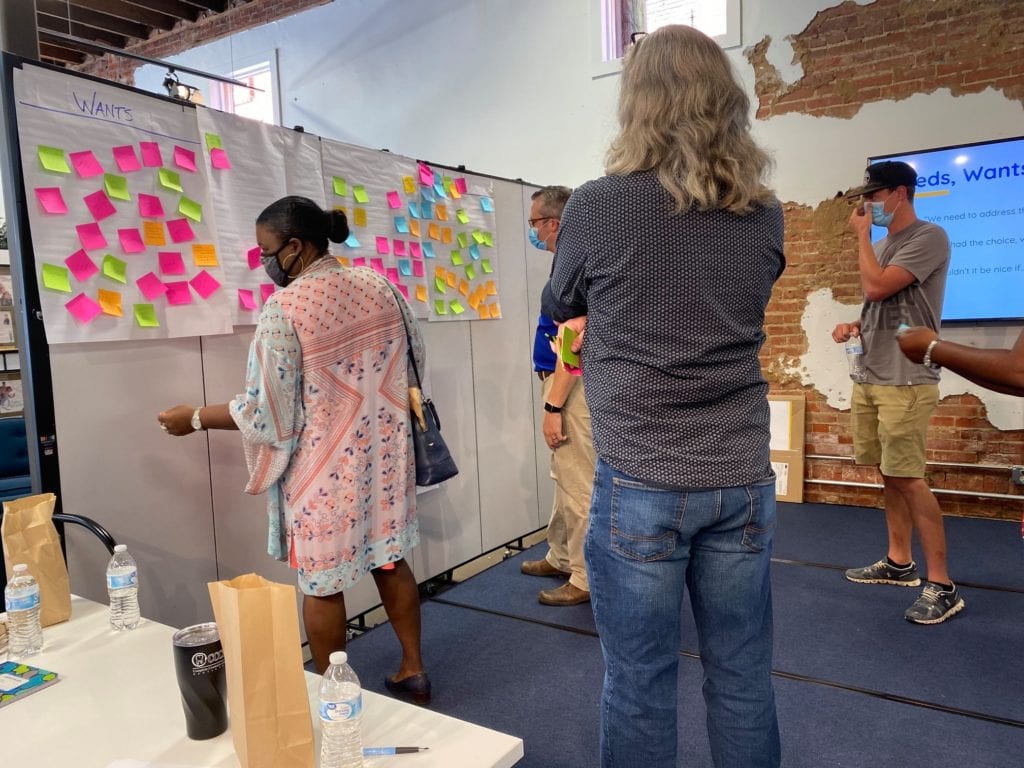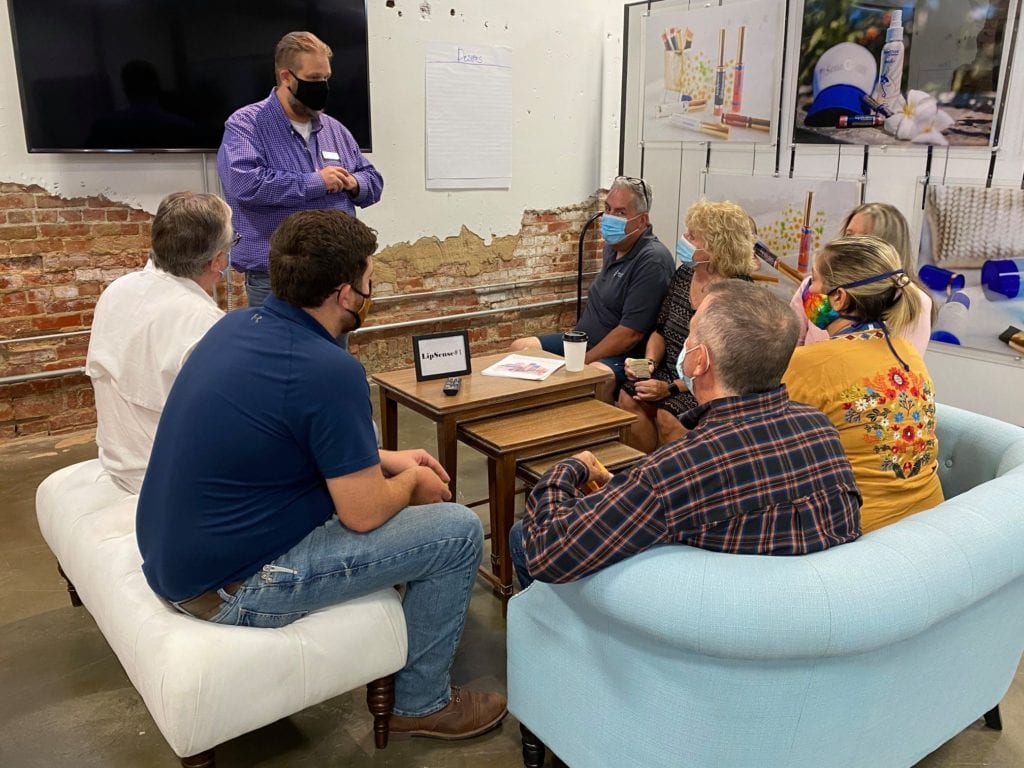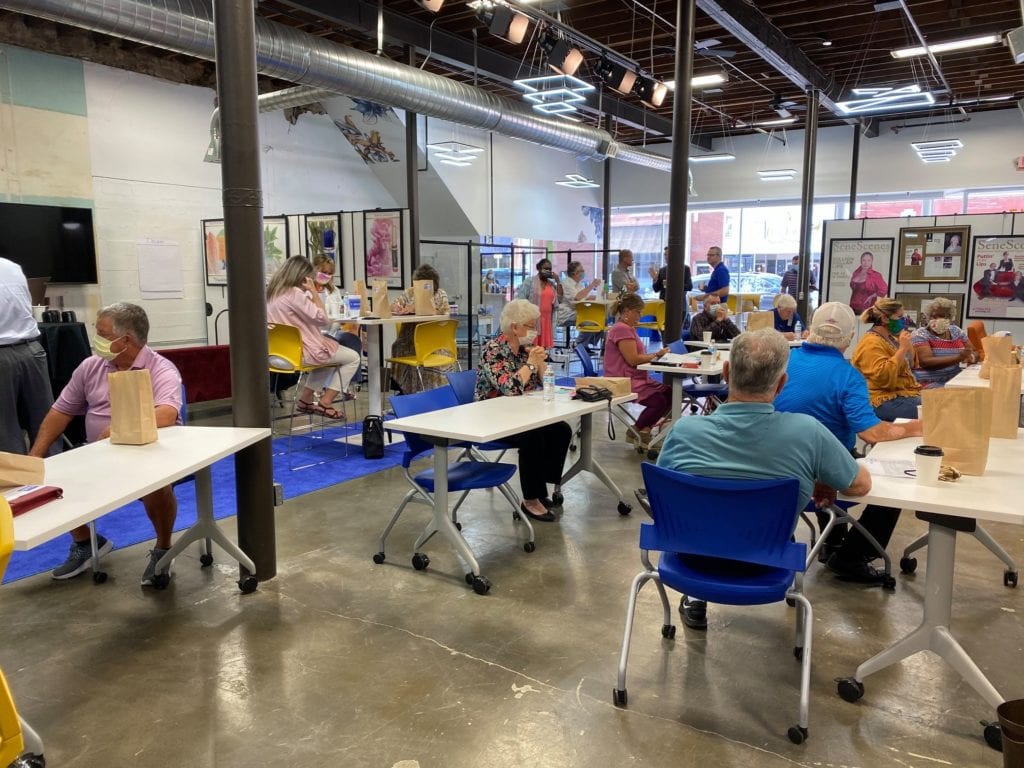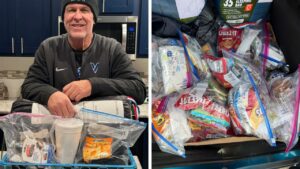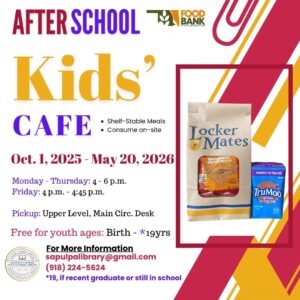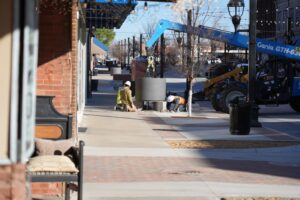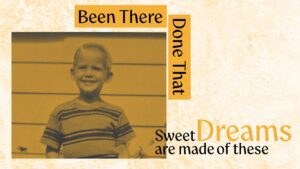On Thursday, August 6th a Downtown Master Plan visioning workshop was held at the SeneGence Event Center. The workshop was jointly hosted by the city’s Urban Development Department and the recently-hired consultant team from Oschner Hare + Hare out of Kansas City. This team will work with members of the community and city leaders to study and design a master plan that voters approved in the most recent GO Bond election. A newly-created 30-member Stakeholder Committee consisting of a diverse group of members of the community, including educators, community leaders, business owners, and leaders of local nonprofit organizations, among others, is to be the sounding board for the planning effort and generated ideas for the consultant team. Oklahoma Lieutenant Governor Matt Pinnell, State Representative Mark Lawson, and City Councillor Carla Gunn were also in attendance.
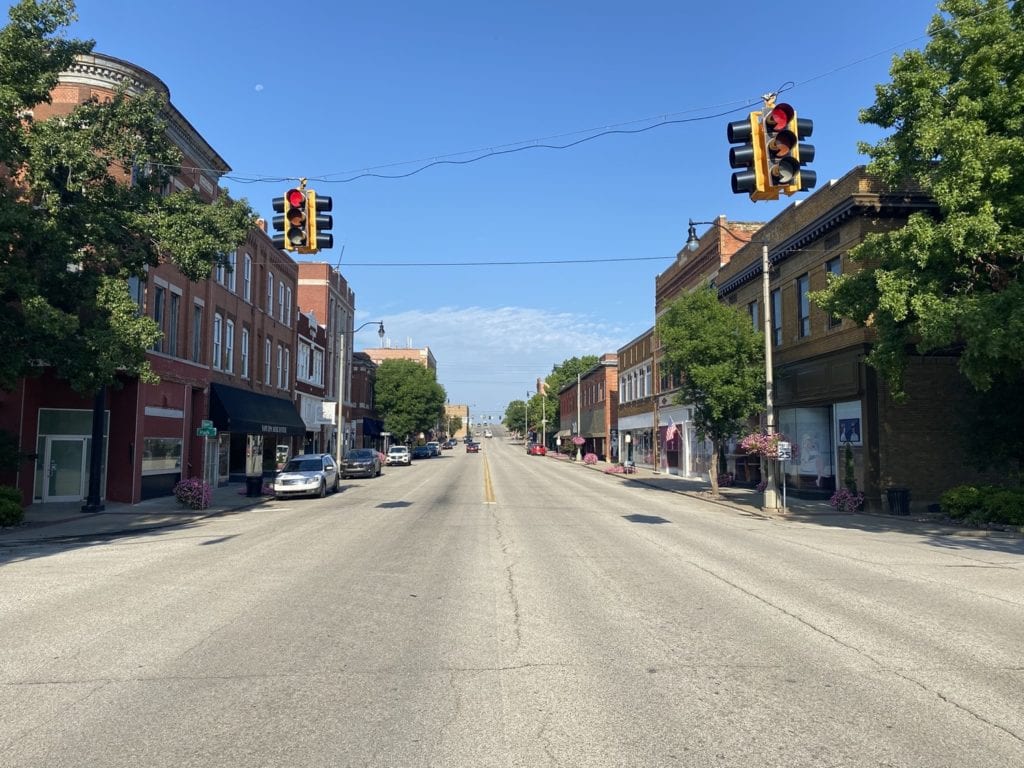
The study’s core boundary area goes east on Lee from Poplar Street to Oak Street, cuts north to Hobson, and then west back to Poplar. The “transition area” goes further south on Poplar to Thompson, east to the railroad tracks, and then curves northwest to meet the boundary of the core area.
Ken Boone, vice president of Oschner Hare + Hare, explained that the object of creating a Stakeholder Committee and having a brainstorming workshop is to “create a vision of Sapulpa’s ideal downtown.” He said that it is “all about choice” and the consideration of our community’s opportunities and constraints. Both are visionary; you have to alleviate or mitigate constraints and capitalize and encourage the development of opportunities” for a plan to succeed.
Boone further stated that there is no better way to trigger ideas and suggestions than this back-to-the-basics method of people talking, interacting, and just “hashing it out.” The “big idea” is to document and acknowledge each idea presented and then throw them all into a “funnel” and pare them down into achievable priorities. This will be a “consensus-built plan” created by members of the community, city leaders, city staff, the Stakeholder Committee, and the consultant team.
Boone praised Sapulpa’s group for being so talkative, respectful of each other’s differing opinions, and for having an informed and realistic grasp of the issues affecting our city.
The process of generating ideas began with breaking the 30 members of the Committee into groups and rotating them through different stations. The stations were titled, “Needs, Wants, Desires, Impediments, Obstacles, and Dislikes.”
For the workshop’s purposes, “Needs” were defined as critical issues, or big things that have to be addressed, may be time-consuming or expensive, and require “heavy lifting.” Priorities named by the groups at the end of session included an “anchor” restaurant or retail business to draw more people, infrastructure issues such as narrowing Dewey to two lanes in the core area, replacing parallel parking with angled parking to increase spaces, safe, walkable sidewalks with good lighting at night, plenty of additional parking, walkable and well-maintained alleys, better branding, less vacant storefronts on Dewey, and a higher median income for the city.
Wants can be discovered by saying, “If I had the choice, I would choose…” Ideas were abundant, and the priorities included an outdoor common space or green area, better public relations and hometime pride, restaurants utilizing rooftop or patio space, beautification, robust, year-round landscaping, better marketing of our Route 66 status, making the area a destination spot, having nightlife options, including ones for families and young people, later business hours, an increased variety of goods and services provided, and a larger selection of restaurants and retail shops (a mix of small and larger-sized businesses), including perhaps a few larger regional or national chains to bring in crowds.
Desires included items that are not necessarily imperative, but that would be nice to have. Priorities were consistent maintenance of buildings and facades, a bricked and well-lit “alleyscape,” housing in the second and third floor of buildings, hotels, short-term rentals, Airbnbs, a brewery, a trolley or shuttle to bring in visitors, a barbershop, an arcade, a walkup ATM, and a brick oven pizza restaurant, among many others.
On the constraint side of things, groups listed what they thought the impediments and obstacles to growth are, and their biggest dislikes.
Impediments were defined by Boone as “things that you have to live or deal with; things that must be minimized or embraced because they cannot be eradicated completely.” The priorities were the city’s demographics (lower household incomes than some other nearby cities, not enough “rooftops” or homes to bring in larger businesses), our proximity to Tulsa (both a blessing and a curse), interstates and highways bypassing us, a lack of diverse mindsets concerning change, and resistance from building owners.
Obstacles were to be thought of as issues that can be overcome with a solid plan. The primary ones were an overall negative perception of our city and county, a lack of consistent positive public relations and marketing, not enough support for existing businesses and restaurants, a lack of a consistent event schedule alerting residents to events, the feasibility of development, a lack of funds, and the need to increase market diversity.
Lastly, groups were asked to identify some commonly acknowledged dislikes of the downtown area. Some said the abundance of marijuana dispensaries (although this was a divisive issue; some see their sales tax contributions as a boon for the community—particularly during a pandemic—and others see it as a drawback), vacant buildings, poor walkability, waste left by dog walkers, and several mentioned suspicious-looking individuals loitering in certain areas who may curtail potential consumer traffic and commerce.
The general sentiment was that Sapulpa is unique compared to other towns, due to our preserved downtown and historic buildings and our tremendous community pride, and that we have a great opportunity here for unprecedented economic development and growth. There is excitement over the current “perfect storm” of talent, leadership, vision, and funding.
All Sapulpa citizens are strongly encouraged to fill out the Downtown Sapulpa Master Plan survey at downtownsapulpaplan.com. Almost 400 people have already taken it, but the organizers would like to have responses from as many people as possible. The survey will be open until September 20th. This link also includes other important information and details on the Master Plan.
The next Downtown Master Plan event will be a Design Charette and Public Open House the week of October 19th. A second and final Public Open House will be held sometime in the first quarter of 2021. The public is encouraged to attend these events to ensure their input is included. The location, dates, and times will be announced soon and will be reported by the Sapulpa Times.


